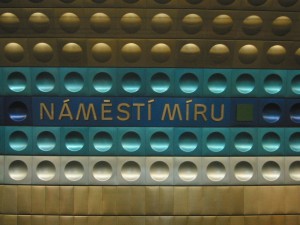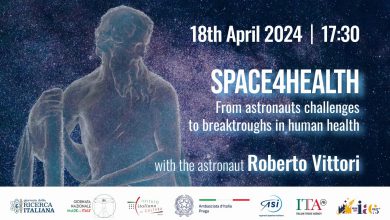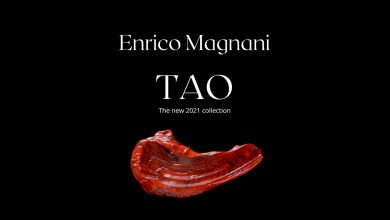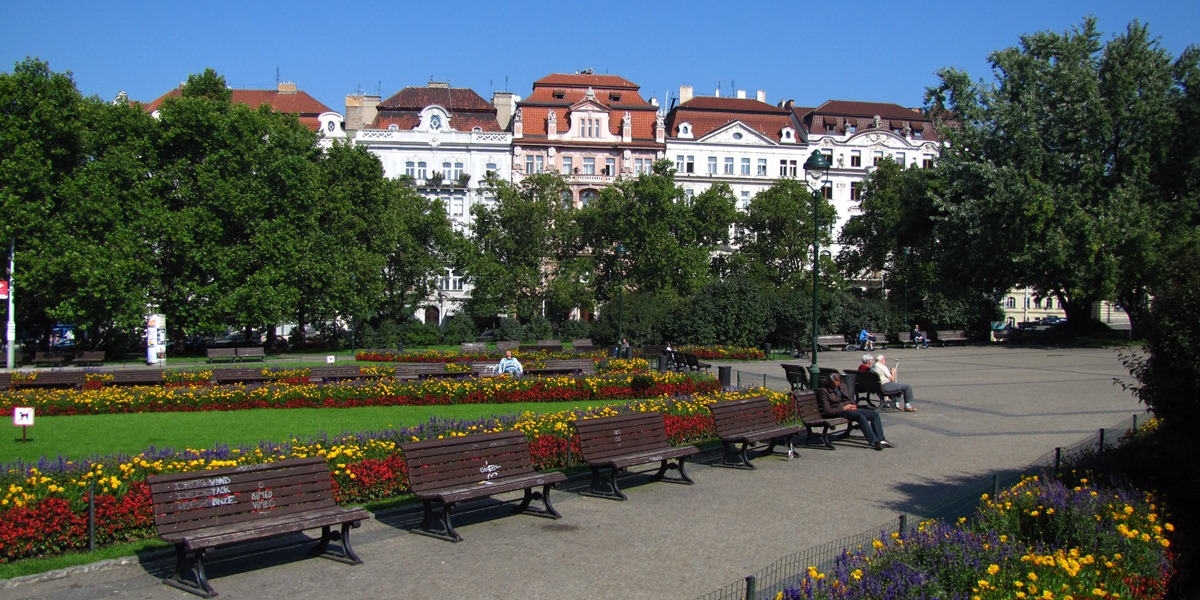
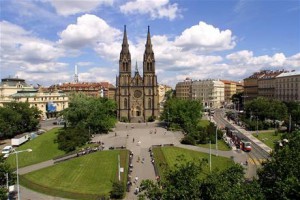 Out of the districts of Prague, Vinohrady is one of the great examples of artistic sophistication and elegance. It can be found on a hill on the right side of the Vltava, and was born as a genuine autonomous urban community only in the first half of the 19th Century acquiring the title of “city” in 1879.
Out of the districts of Prague, Vinohrady is one of the great examples of artistic sophistication and elegance. It can be found on a hill on the right side of the Vltava, and was born as a genuine autonomous urban community only in the first half of the 19th Century acquiring the title of “city” in 1879.Initially, it’s territory consisted of the entire current areas of Vinohrady and Žižkov, but it was subsequently downsized repeatedly over time. Between 1788 and1867, the zone was known by the name of “Viničné Hory” (Vineyard mountain), then from 1867 to 1968 by the name of “Královské Vinohrady”, literally “royal vineyards,” or “Königliche Weinberge,“ in German. The name “Vinohrady” actually means “vineyards”. Actually from the 14th century, all of the hill was destined for the planting of the grapevine on the orders of the Emperor Charles IV. Between the 18th and 19th centuries however, it was converted into a mulberry plantation due to Italian silk markets which had moved to Prague.
In 1875 the area was divided into two parts: “Královské Vinohrady I” and “Královské Vinohrady II”. Part I was renamed “Žižkov” while the other one maintained it’s old name. The first tram line was constructed in 1897 and connected the current zone of Wenceslas Square to Flora, while the connection through the A line of the metro took place from 1978-1980. In 1922, when the area first became part of the “Great Prague”, it was labelled as the 7th district and it’s name was abbreviated to “Vinohrady”. In 1949 the western part was united with the borough of Prague 2 and the eastern part remained Prague 12. In 1960, when Prague was cut down from 16 to 10 districts, the northern part of Prague 12 was joined to Žižkov (Prague 3) and the southern part to Prague 10. According to some, this division was due to the fact that Vinohrady had always been considered a bourgeois area and therefore politically untrustworthy to the communist regime.
Vinohrady today extends over an area of 3.79 Km² and has a population of around 56,000 inhabitants. It is a beautiful, elegant residential area particularly loved by foreigners. There are many Neo-Renaissance style buildings, as well as Neo-Gothic and Art Nouveau, built over the 19th and 20th centuries. Also the Italians who historically have preferred the zone Malá Strana zone, after the end of Communism have moved to this much desired area for it’s liveability. The main street is Vinohradská which extends from Wenceslas Square to Žižkov and Strašnice. On this arterial road you can find some of the most beautiful, important buildings such as the one for Czech radio, the old Market Hall and the Water tower. Within the area are four stops of the A line of the City metro (Náměstí Míru, 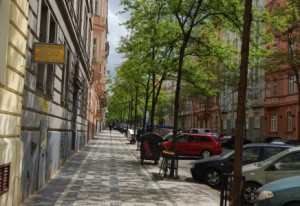 Jiřího z Poděbrad, Flora, Želivského) and many autobus and tram lines which connect to the rest of the city.
Jiřího z Poděbrad, Flora, Želivského) and many autobus and tram lines which connect to the rest of the city.
 Jiřího z Poděbrad, Flora, Želivského) and many autobus and tram lines which connect to the rest of the city.
Jiřího z Poděbrad, Flora, Želivského) and many autobus and tram lines which connect to the rest of the city.In the western part of the district is “Náměstí Míru” (Peace Square) in which the beautiful Catholic Saint Ludmila Church towers in the centre. Built between 1888 and 1892 in Neo-Gothic style, it was based on the design of Czech Architect Josef Mocker (who also completed Saint Vitius Cathedral). Saint Ludmila was reopened after a long period of inactivity in 1992. The church has three naves and the portal was decorated by Josef Václav Myslbek, but many other famous artists contributed to the completion of the magnificent interiors. Behind the church, is the House of Culture, a building designed in Neo-Renaissance style by Antonin Turek. Turek is also the designer of the Vinohrady Market Hall building, which was built in 1902 and one of the last historical markets of the city, and also the Water Tower (Vinohradská vodárenská věž), built in the same style in 1882.
Near the church, but still in the square, is the Vinohrady Theatre (Divadlo na Vinohradech), one of the city’s main theatres, which was built in 1905. Among the other theatres of Vinohrady, one should mention the State Opera (Státní opera Praha), founded in 1888 as the “New German Theatre,” and known between 1949 and 1989 as the “Smetana Theatre.” It’s performances started on the 5th January 1888 with Richard Wagner’s opera “Die Meistersinger von Nürnberg.”
Going uphill on Vinohradská street you reach another important square, Náměstí Jiřího z Poděbrad (George of Poděbrady Square), named after the King of Bohemia (1458 to 1471), the first European monarch to renounce the Catholic faith while adopting the religion of the reformist Jan Hus.
In the large square the distinctive, modern Church of the Sacred Heart, designed by Slovenian architect and urban planner Jože Plečnik between 1928 and 1932. From 2010, the building has been considered a national monument. In the Vinohrady area, there are various parks, Havlíčkovy sady, which is near to Vršovice, is the second largest park in the city. Here you can find the majestic Gröbe Villa, a Neo-Renaissance building which belonged to the businessman Moritz Gröbe and was built at the end of the 19th Century, and under which the Grébovka grapevines there are still cultivated. Another park is Riegrovy sady, located on the left side of Vinohradská, on the border with Žižkov. The park takes the name of the Czech politician František Ladislav Rieger and thanks to it’s position, allows you to enjoy a spectacular view of Prague Castle. Established at the beginning of the 20th Century, inside the park you find the Vinohrady Sokol Building, which is still an active Sports Centre.
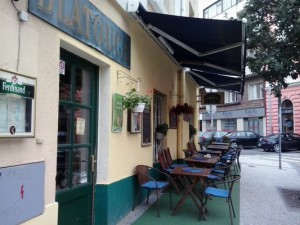 Also forming part of Vinohrady is the area of the main station (Hlavní nádraží), the main city railway yard, which opened in 1871 and was inaugurated with the name of Franz Joseph I. During the First Republic, the station took the name of “Wilson Station,” (Wilsonovo nádraží) in honour of the American President. The current Art Nouveau building was built between 1901 and 1909 from the designs of Czech architect Josef Fanta.
Also forming part of Vinohrady is the area of the main station (Hlavní nádraží), the main city railway yard, which opened in 1871 and was inaugurated with the name of Franz Joseph I. During the First Republic, the station took the name of “Wilson Station,” (Wilsonovo nádraží) in honour of the American President. The current Art Nouveau building was built between 1901 and 1909 from the designs of Czech architect Josef Fanta.During the daytime, Vinohrady is a very active area, though certainly quieter than the centre. The zone is the home of many businesses, shops, restaurants, international companies, banks and various institutions among which is the “Královské Vinohrady” University Hospital of the Medicine Faculty of Charles IV University. Even during rush hour, it is enough to move away from the main roads of the area to immediately find yourself in parallel tree-lined, silent streets, where the eye, slightly indiscreetly stops quickly to admire the elegant ceilings and refined furniture that you can glimpse at through the glass of the building windows, such as those on Moravská, Slovenská and Jana Masaryká streets.
But in the last few years even the nightlife of the area has taken off thanks to some discos, clubs and pubs which fill up it’s streets and are a centre of attraction for young and not so young people who want to spend a pleasant evening outside for dinner or have fun over the weekend.
Of particular interest are the numerous cafes, on the narrow tree-lined streets, many of which are in retro style with dim lights and dark interiors, equipped with bookshelves; attended throughout the day by students or people who look for a quiet corner to read whilst having a drink, far but not too far from the centre.
By Mauro Ruggiero from: Progetto Repubblica Ceca, Nov-Dec.2012
Pic. from wikipedia

